Google Search March 2024 Update Summary

Google Search March 2024 Updates
For all marketers who do Google SEO, 2024 is destined to be a memorable year. This is because Google released a large-scale update to its search ranking algorithm in March 2024, which has affected many websites.
More precisely, Google search engine actually did two updates in March this year, namely the March 2024 spam update and the March 2024 core update, as shown in the following figure.

Both of these updates started on March 5th, 2024. The spam update took a total of 14 days and 21 hours, while the core update took 45 days.
This update mainly includes the following aspects:
Reduce low-quality and non-original content. Regardless of the content generation method used, as long as a large amount of low-quality content is generated to obtain search engine rankings, it may be judged as spam content.
Google emphasizes that content needs to be helpful to users, so the core algorithm update in March enhanced the judgment of content quality, focusing on giving high rankings to content that is helpful to users. Content that is not helpful to users or judged by Google to be of low quality will be removed from the ranking.
After completing the core algorithm update on April 19th, Google explained the effect of this update on April 26th. Originally, it was planned that 40% of low-quality pages would be removed from the search system, but the final result was that 45% of pages were removed from the Google search engine.
In addition to that, there is the handling of website reputation abuse, which mainly targets some high-authority websites that may accept some low-quality guest blogs. These guest blogs provide weight to some websites through external links, and this update will have an impact on the external link service industry. Generally, SEO is divided into on-page SEO and off-page SEO, and the most important thing in off-page SEO is external links. Usually, companies will provide blogs for other high-authority websites and embed their own links in guest blog articles to obtain weight support. However, Google has started to deal with this behavior. The latest news in May is that Google has started to manually intervene in the reputation abuse of some high-authority websites. There is currently no conclusion on whether it is appropriate to update the algorithm.
For many experienced SEO experts, buying a high-authority domain name and starting a new business on it is a very good way to quickly achieve SEO results. Google has also started to deal with this behavior. Buying a high-authority domain name, building a content website based on it, and quickly monetizing it should not be feasible.
Why did Google make this update?
To understand why Google launched this update, we can actually review some of Google's past updates in 2023.
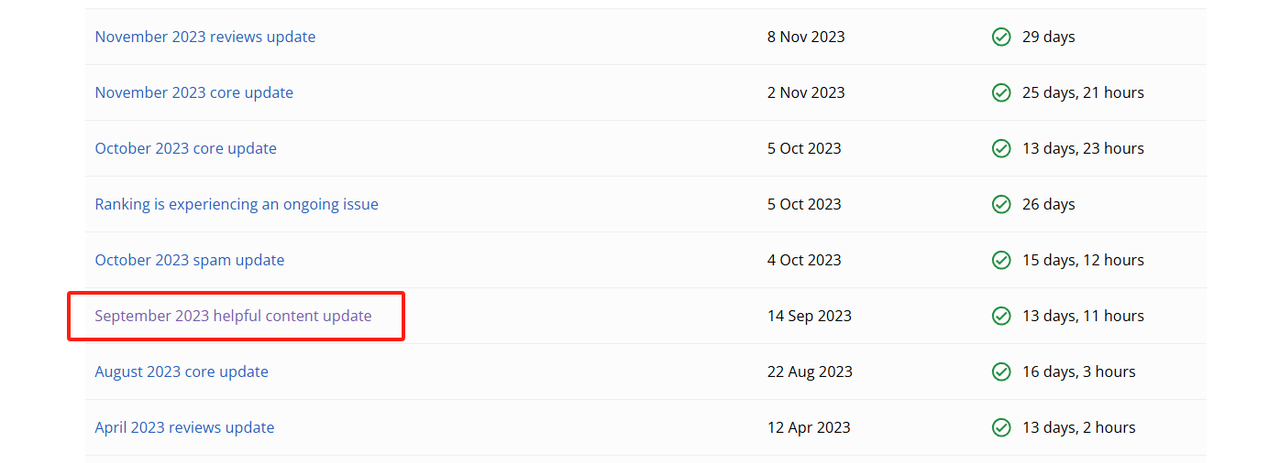
From the 2023 update, we can see that Google started an update called "helpful content update" on September 14, 2023, which is generally referred to as HCU. This year's update can be understood as a continuation of the update from September last year. In the update from September last year, Google began to emphasize that the content should be helpful to users, that is, helpful content. However, the update from September last year was more processed at the single-page level. This can be seen from the description itself.

But as we all know, Since the large model represented by ChatGPT entered the public perspective, basically all the content marketing teams are using ChatGPT, Claude, copy.ai and other AI-generated content tools to generate SEO content. Therefore, the generation of content on the Internet has reached an unprecedented level, and some teams even use technical means to generate content in large quantities, such as a product that does video content summary overseas from September last year to April this year, using YouTube's massive video library to generate more than 3 million video summary content, and the website traffic has also been pulled from 0 to the MAU 9 million every month.
From Google's perspective, this situation is obviously not what they want to see. There are several important reasons for this:
Large-scale content creation poses a huge challenge for end users to search for the content they want, greatly reducing the user experience of using search engines.
Large-scale content generation will also bring a lot of cost expenses to Google, because Google needs to crawl, analyze, and store this content. If a large amount of poorly produced content without value in any of them is produced, it is equivalent to Google spending money to deal with garbage.
These content creators usually do not attract traffic to support their business, but use advertising and affiliate marketing to monetize traffic, which can have a negative impact on Google's entire business model.
Based on these reasons, Google started algorithm updates in September last year, initially targeting whether web pages are helpful or not. With the update in March this year, it began to judge the content of the entire site, that is, HCU began to affect the entire site.
The impact of Google's series of updates
After the algorithm update was completed in September last year, core updates were carried out in October and November. The first affected websites were some related to YLYM (Your Life, Your Money). For example, a famous overseas website based on tables for financial planning causal.app, which had gained a lot of traffic due to producing a large number of very low-quality what-related articles, but was directly hit because it belonged to the field related to money. After the update in November, the results are as follows:
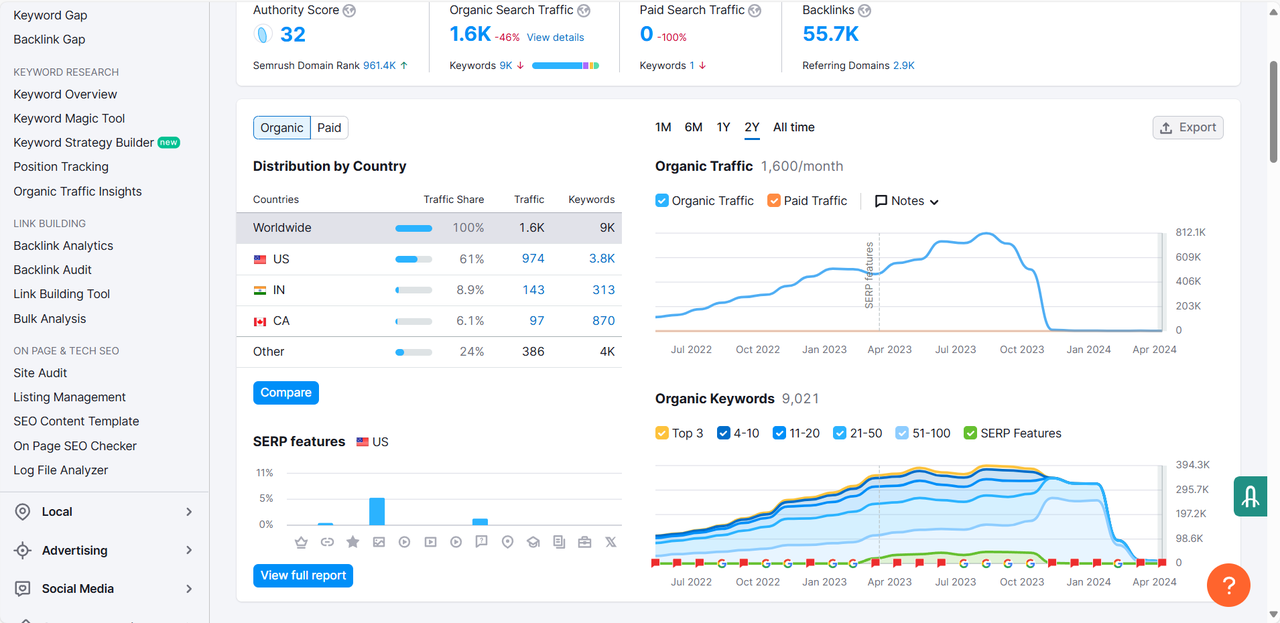
It can be seen that the search term volume has dropped directly from hundreds of thousands to several thousand, and has not yet recovered.
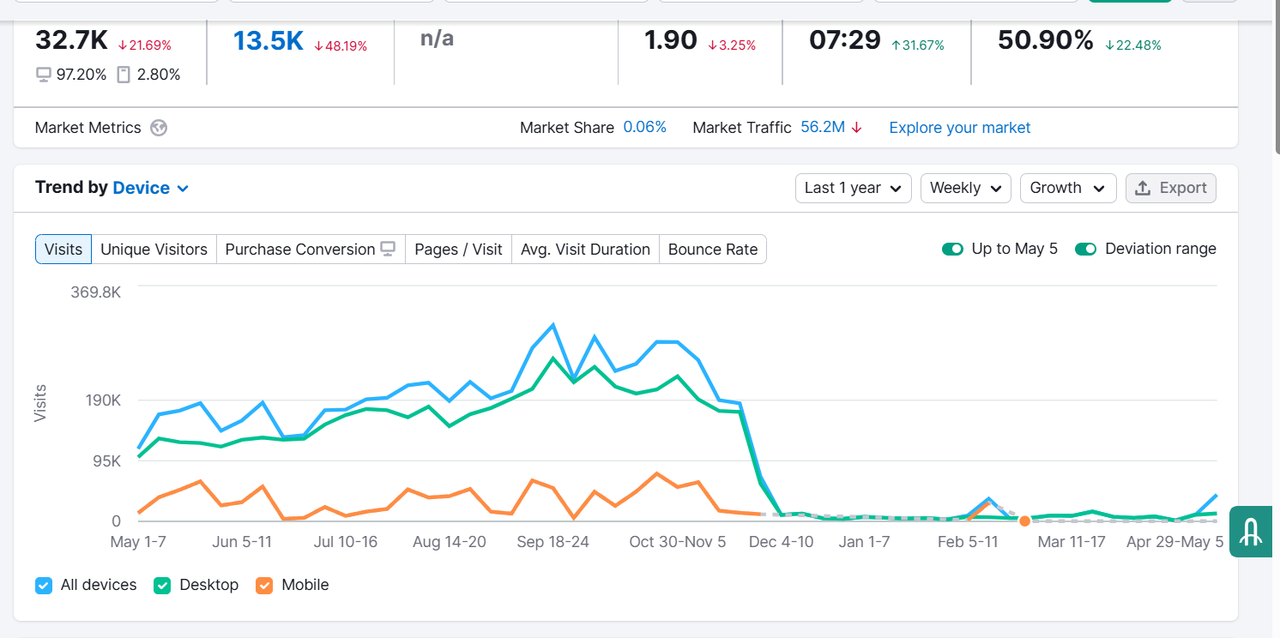
From the website traffic point of view, directly from more than 300,000 visits per month directly fell to the feet, only about 30K visits left every day, 90% of the traffic evaporation. Fortunately, because causal.app itself is a brand website, although Google has dealt with most of the junk content, the inclusion of the website has not been affected, you can still search for this website in the search engine.
After the update in March this year, because Google began to look at valuable content for users from the whole site, and because Google pays more attention to the website carrying brand and business, a large number of content sites were directly removed by Google. For example, wealthofgeeks.com, once MAU reached more than 1 million, but after this update, it was directly removed from the Google search engine.

The website we mentioned earlier, which generates a large amount of content using videos, has also received a warning from Google this time. Its traffic situation is as follows:
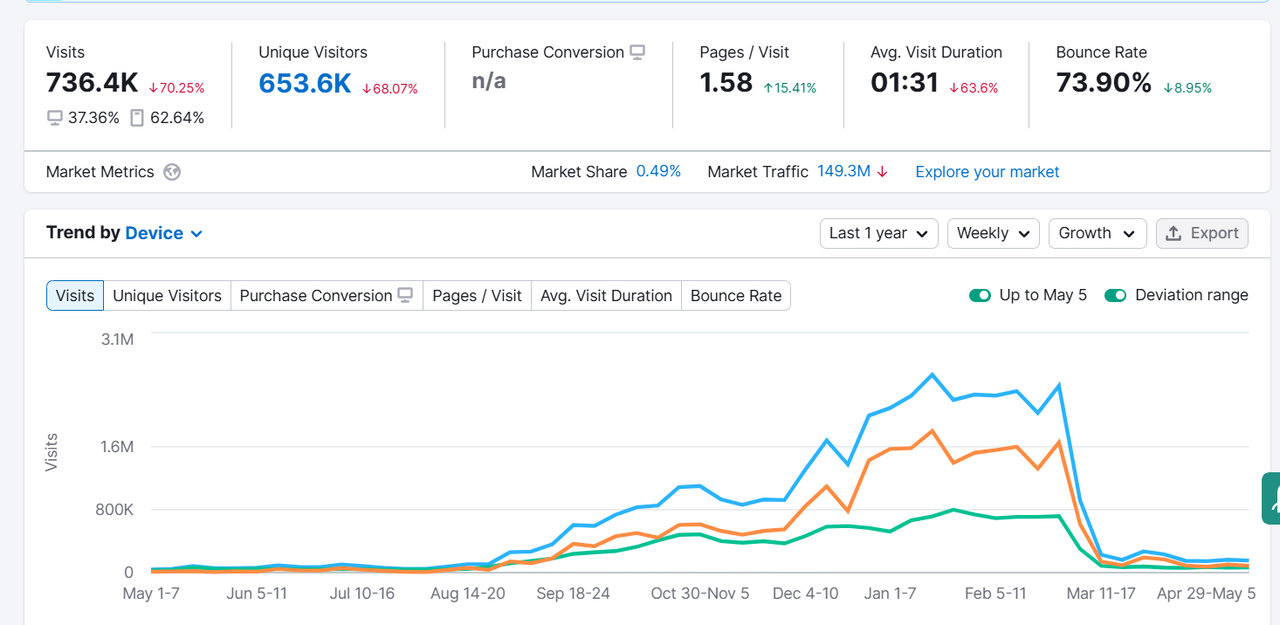
More than 90% of search terms have also been directly eliminated.
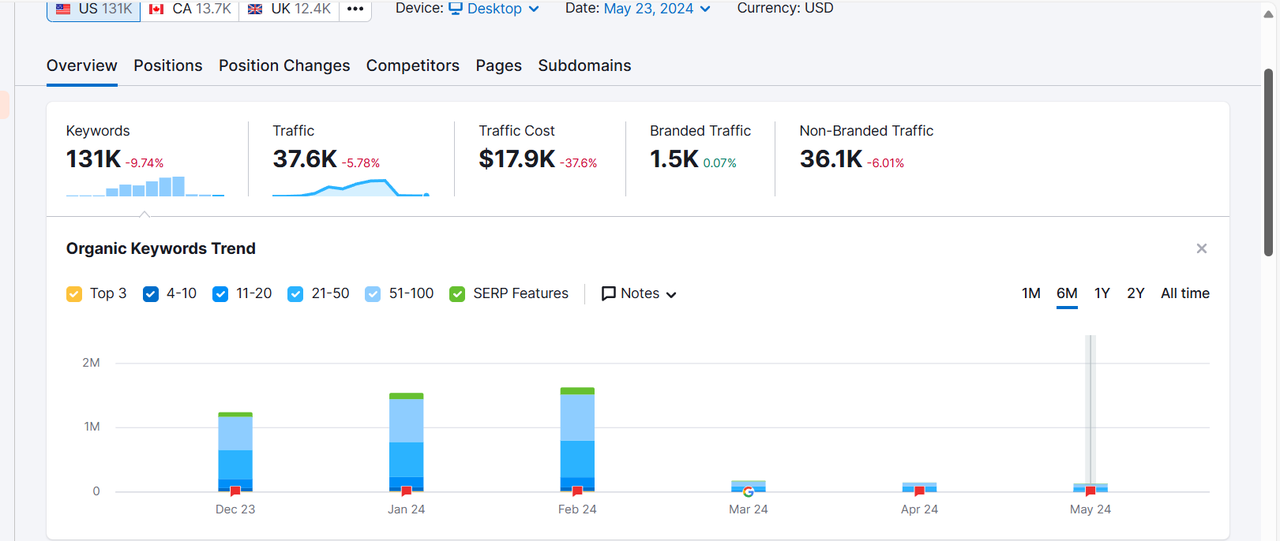
Of course, because this website itself is not a content site, but a tool website that provides videos as summary plugins, it is considered a branded website in Google's evaluation. Therefore, Google did not delist the website, but simply treated a considerable amount of content as garbage and did not include it.
Other than that, we have also observed that there are quite a few websites that do ToB or ToC business. Although they also use AI to generate content, the traffic and inclusion of keywords have not changed significantly. Including our own clients who use our tools to generate content, the traffic and search keyword inclusion have not been affected by the update.
For example, if a company starts using our product in January, the search term curve is as follows:
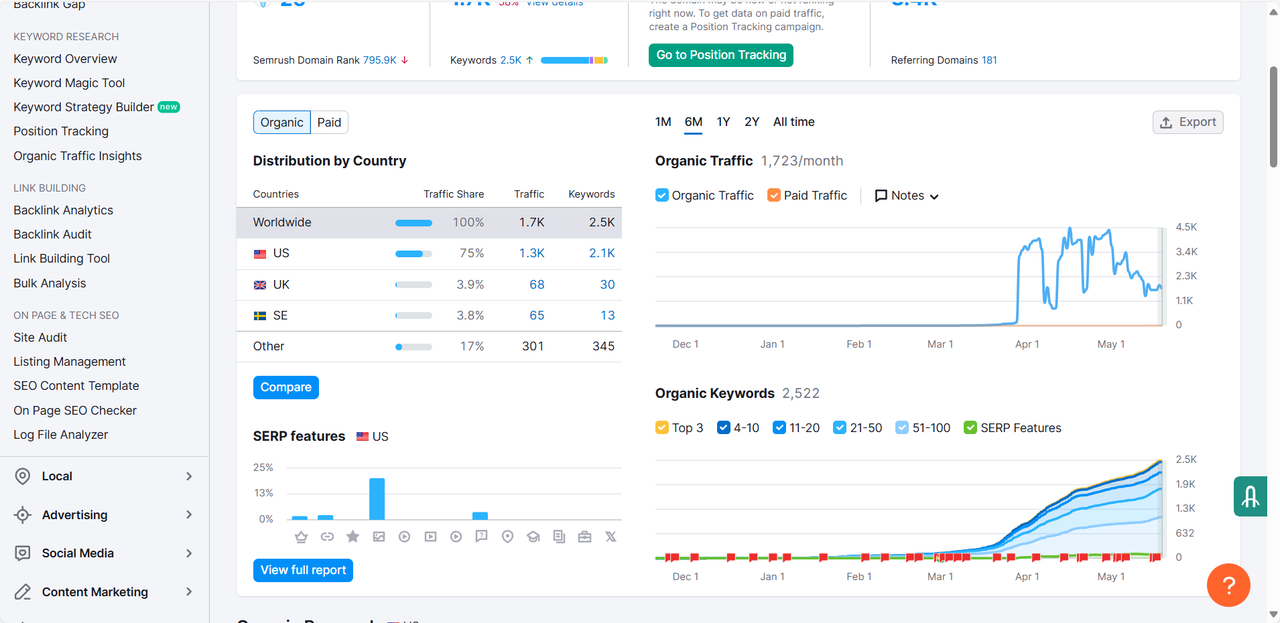
Another customer has been using Quick Creator since March, and their search term curve is:
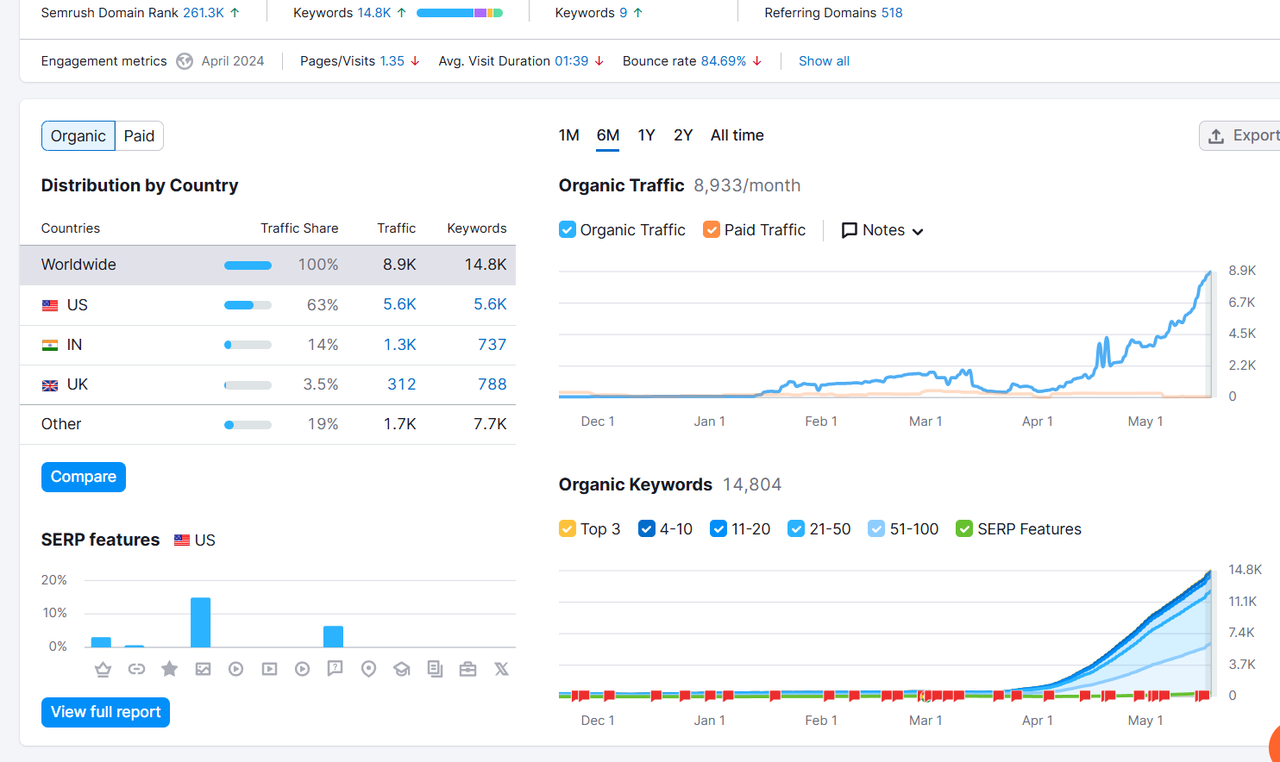
For our overseas enterprises, everyone hopes to obtain natural traffic at a relatively low cost through SEO. In the AI era, if content is created entirely by humans or free lancers, compared to those enterprises that are proficient in using new technologies, it is equivalent to confronting the missile era with a long sword and spear, with no chance of winning.
Last year, many domestic companies going global also used ChatGPT, Copy.ai, etc. to generate content by combining prompts and ideas given by some experienced players overseas. However, after the update in March, a large number of pages were also removed from the search engine by Google, and it was also very confused what to do next.
Can AI still be used to create content today?
Now we need to answer a question: Can AI still be used to create content today?
The answer is obviously yes, because Google has never said it does not support AI-generated content. Even many of the content websites removed by Google this time are not AI-generated content. Google's requirement is content that is helpful to users, whether you are written by humans or AI.
So we require everyone to use AI reasonably, instead of simply using the well-known method on the Internet to directly prompt to ChatGPT to generate content.
Returning to our own normal writing perspective, how should we generally create valuable content for users?
Generally speaking, the first step is to think about what problems users may encounter and need our help to solve through content. This process is what we call keyword research. Google emphasizes the importance of branding, which means that we should have our own products or services. Starting from our own products and services, we can think about the profile of our Target Users and what problems we can solve for them.
Starting from this idea, we can find our core keywords, which are the core search terms. Through this, we can expand the classification matrix of content that can bring value to users, which means we have a content architecture. Usually, this is the root node of the topical map for our subsequent SEO.
Based on these roots, we can use tools to break down and then break down layer by layer into long-tail keywords around the core words. These long-tail keywords are usually the words that users will search for answers to, and we can create high-quality content that is helpful to users based on these words.
What does Google mean by high-quality and helpful content? This article should be able to directly explain or answer the search intent represented by the long-tail search term. And it is best to meet the reading level of search users.
Lastly, it is best to have pictures to assist in understanding the content. The article should also have internal and external links to help users understand relevant knowledge. The article should have a very good structure for easy navigation by users. At the same time, for some types of articles, it is best to have real examples, data, etc. as support for the content.
See also:
Google Core Update March 2024: Impact Analysis & Changes (quickcreator.io)

